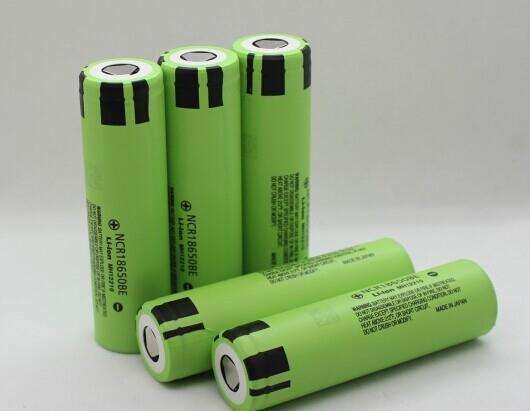Sending Lithium Batteries Overseas-Methods, Advantages and Limitations
Dec 31, 2019 Pageview:1581
Can you send lithium batteries overseas?
Yes, you can ship lithium batteries overseas through as airmail or by ocean freight. However, moving these cells across international borders isn’t similar to sending any other package such as a bike or armchair. These batteries are considered dangerous goods, and therefore, rules and regulations have been put in place to guide individuals and shipping couriers on how to safely and appropriately move them.
How do you send lithium batteries overseas?
All types of batteries are considered hazardous when shipped including lithium-ion batteries and one should, therefore, be familiar with what they are allowed to send and what is prohibited. Typically, when being shipped overseas, there are only two popular methods well-known, and these are through airmail or as cargo on an actual ship. There are however, guidelines that regulate and inform on the best way in which you can send your lithium-ion batteries safely and they are as follows:
1.When sending the standard lithium batteries like AA and AAA, you should make sure that they are out of the electrical device in which they power. However, if the cells are unopened, you are advised to leave them in their original packaging for transport.
2.The batteries should be wrapped or packaged separately before transport using insulation materials such as bubble wrap, which also protects the cells from any damages during mid-shipment.
3.When shipping your lithium-ion batteries overseas, be sure to include a Material Safety Data Sheet that will travel with the package. The list is expected to have any dangerous items contained in the box and how possibly to dispose of them should hazardous emergencies arise from them.
4.Any package should not contain more than two lithium-ion batteries when being shipped. This is because lithium cells are prone to thermal runaway and when exposed to high temperatures, they can ignite flames. This is the same reason why these cells are considered dangerous cargo on every shipping service, with some couriers even restricting the movement of the cells.
Thermal Runaway in detail
When a battery is subjected to severe or high-temperature conditions, it builds up pressure within the cells and goes into a state of degradation. The process is catalyzed by increased temperatures which, in turn, release excess energy that causes a further increase in temperature due to the exothermic reactions of chemicals within the cells. Since there is limited space for the release of this excess energy, the electrolyte, which is also highly flammable, gets ignited and burns thereby, causing sparks and fires. When a cell begins breaking down the internal battery structures, a thermal chain-reaction is released, which deteriorates the battery faster.
5.Lithium-ion batteries must remain inside the electronic devices in which they power during transportation overseas.
6.The electronic devices in which the lithium-ion batteries are being shipped must be turned off before being packaged. Necessary measures must also be equipped to ensure the same devices don’t switch themselves on unintentionally mid-transit. These measures can be incorporated in the switches meant for the devices.
What are the advantages and limitations of sending lithium batteries overseas?
Shipping lithium batteries present a few benefits as well as limitations that are reflecting the various guidelines or restrictions used to regulate the movement of these batteries oversees. Restrictions, however, vary from one shipping service or company to another but are all in line with the newly set standard rules and regulations by the relevant authorities. These advantages and limitations can be seen in:
Labeling
Packages that contain devices incorporated with lithium-ion cells must be shipped separately and labeled. One should give or put the necessary information on the outside of the container indicating that it has a specific number of batteries inside. The advantage is that this helps prevent confusion that may lead to mixing up various packages and, thus, inappropriate and unintentional handling of the cells, which is a hazard to safety.
Documentation
Shipments are expected to be accompanied by the relevant documents that explain how the various packages must be handled. This advantage helps prevent any mishandling, which can lead to damages since the documents clearly instruct the necessary instructions on inspection procedures and repacking methods.
Packaging
Lithium batteries are capable of being sent inside the devices in which they power. When sent outside the equipment, they should be in the same package. This benefit helps reduce packaging costs for the separate items because they will ultimately be sent as one. Batteries shipped outside a device must be packed separately and well-protected as well as insulated in their original sealed packaging containers from the manufacturer. Shipping lithium batteries individually increase the costs of packaging because one has to cater for the cost of moving the device and cells differently and is, therefore, a limitation.
Shipping means or services
Lithium-ion batteries are not allowed to be shipped via air separate packaging to their respective devices and should, therefore, only be shipped inside the tools or in similar packages. This regulation poses as an advantage to the customer because they get to save on packaging costs. Also, when subjected to high altitudes, lithium batteries can be unstable and thus recommended inside the devices.
The number of batteries
When shipping lithium-ion batteries, and especially together with their corresponding devices, the number of cells is limited to the number required to power the particular electronic device. This limits one from sending a large number of batteries in one package and, therefore, increases the packaging costs.
Is it expensive to ship lithium-ion batteries?
Yes, it usually costs a substantial amount to ship lithium batteries. This is because as much as the prices vary based on the means and shipping services are chosen, it requires extra work when moving the batteries. This additional work is in terms of caring for the cells to make sure that they are handled appropriately and prevent any dangers imposed on them during the trips. Also, the shipping requires much additional paperwork, and this increases the costs as well.
Conclusion
If you intend on shipping your lithium-ion batteries, then you have no other choice but to adhere to the rules and regulations provided in this guideline. Before sending any lithium battery, or devices containing the cells, overseas, contact the customer service team of the chosen shipping service or company, and they will guide you on what you need and how to do it.
- Prev Article: Revive Lithium Battery-Possibility, Reviving and Protection
- Next Article: Refurbish Lithium Ion Battery Introduction and Effect
Leave Message
Hottest Categories
-
Hottest Industry News
-
Latest Industry News












